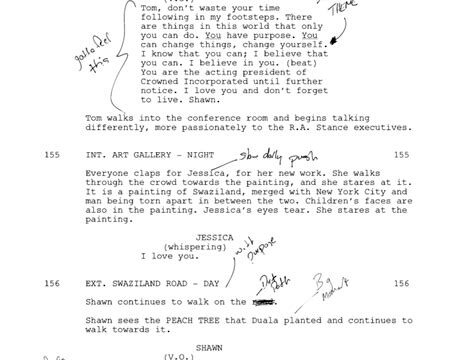Learn to master storytelling with our comprehensive guide covering story structure, character development, dialogue, plot, visual techniques, scenes, genre writing, and industry-
Understanding story structure
Understanding story structure is the key to creating a compelling narrative that keeps the audience engaged from beginning to end. Whether you’re writing a screenplay for a film or a television series, a strong story structure is essential for driving the plot forward and delivering a satisfying experience for the viewer.
One of the most important elements of story structure is the three-act format, which includes the setup, confrontation, and resolution. Each act serves a specific purpose in advancing the story and building tension, leading to a climax and ultimately a resolution. Understanding how to effectively structure these acts is crucial for creating a cohesive and engaging narrative that captures the audience’s attention.
In addition to the three-act structure, understanding the importance of plot points and turning points is essential for keeping the story moving and maintaining the audience’s interest. These key moments in the narrative propel the story forward and drive character development, ultimately leading to a satisfying conclusion.
Developing engaging characters
Developing engaging characters is crucial for any successful film or television script. Characters are the heart of any story, and it is their journey that captivates the audience and keeps them invested in the narrative. A well-developed character not only adds depth to the story but also creates an emotional connection with the viewers.
In order to create engaging characters, a writer must focus on providing them with a rich and multi-dimensional personality. This involves giving the characters distinct traits, motivations, and backstories that make them relatable to the audience. Each character should have their own unique voice, desires, and flaws, which will help in making them more compelling and human.
Furthermore, engaging characters are often the ones who undergo significant growth or change throughout the course of the story. It is important to show the character’s development and evolution, as this not only adds depth to their personality but also creates a more meaningful and impactful narrative for the viewers.
Creating powerful dialogue
Effective dialogue can be the key to bringing your characters and story to life. It should be engaging, natural, and reveal important information about the characters and plot. One way to create powerful dialogue is to focus on the characters’ unique voices and personalities. Each character should speak in a way that reflects their background, values, and motivations. This will make their conversations more authentic and interesting to the audience.
Another important aspect of creating powerful dialogue is to ensure that it moves the story forward. Dialogue should not just be filler or small talk, but should drive the plot and reveal important information. It can also help to build tension, develop relationships between characters, and convey emotions. Well-crafted dialogue keeps the audience engaged and invested in the story.
It’s also important to pay attention to the rhythm and pacing of dialogue. Varying the length and style of conversations can make them more dynamic and engaging. Additionally, using subtext and implications in dialogue can add layers of meaning and complexity to the story. Crafting powerful dialogue is a skill that takes practice and careful consideration, but it can greatly enhance the overall quality of the script and captivate the audience.
Mastering plot development
Plot development is a crucial aspect of any screenplay or teleplay, as it serves as the foundation for the entire narrative. Mastering this element involves creating a compelling and coherent sequence of events that drive the story forward and keep the audience engaged.
One key aspect of mastering plot development is understanding the concept of rising action, climax, and resolution. This involves creating tension and conflict throughout the story, leading up to a pivotal moment that changes the course of the narrative, followed by a satisfying resolution for the characters and the audience.
Moreover, it is essential to develop multi-dimensional characters and subplots that intertwine with the main plot, adding complexity and depth to the overall story. By carefully crafting the progression of events and character arcs, writers can ensure that the plot unfolds in a way that captivates the audience and delivers a powerful emotional impact.
Utilizing visual storytelling techniques
Visual storytelling is a powerful tool in script writing for film and television. By utilizing visual storytelling techniques, writers can effectively convey the story to the audience in a compelling and immersive way. One of the key techniques is the use of symbolism and imagery to convey emotions and themes without relying solely on dialogue. Instead of telling the audience how a character feels, visual storytelling shows it through the use of visual cues such as facial expressions, body language, and setting.
Another important technique is the use of visual metaphors and motifs to enhance the narrative. By incorporating recurring symbols or visual elements throughout the script, writers can create a deeper, more cohesive story that resonates with the audience on a subconscious level. This allows for layers of meaning to be conveyed, adding depth and complexity to the narrative.
Furthermore, the use of visual storytelling techniques such as framing, camera angles, and lighting can also greatly impact the mood and tone of a scene. By carefully crafting the visual elements in each scene, writers can create a more immersive and engaging experience for the audience, drawing them further into the world of the story.
Crafting dynamic scenes
When it comes to crafting dynamic scenes in a script for film or television, it’s important to keep in mind the overarching goals of the story. Each scene should serve a specific purpose in moving the plot forward, revealing character insights, or creating tension and conflict. By understanding the desired impact of each scene, writers can effectively construct compelling and engaging moments for their audience.
Additionally, writers can utilize visual storytelling techniques to enhance the dynamics of their scenes. This can include incorporating strong imagery, utilizing camera angles and movement, and creating a sensory experience for the audience. By carefully considering the visual elements of a scene, writers can elevate the emotional impact and overall effectiveness of their storytelling.
Furthermore, crafting dynamic scenes also involves thoughtful consideration of pacing and structure. By controlling the rhythm and flow of each scene, writers can build anticipation, create impact, and maintain audience engagement. Whether it’s through the use of dramatic pauses, rapid dialogue exchanges, or carefully choreographed action, the pacing of a scene can significantly contribute to its dynamism and overall impact.
Exploring genre-specific writing
When it comes to writing for film and television, understanding genre-specific writing is crucial for creating compelling narratives. Whether you’re working on a romantic comedy, a sci-fi thriller, or a historical drama, each genre comes with its own set of conventions, tropes, and expectations that can greatly influence the direction of your story.
It’s important to immerse yourself in the specific genre you’re working in, whether that means watching classic films or TV shows within that genre, reading books and scripts, or attending genre-specific workshops and seminars. By familiarizing yourself with the intricacies of the genre, you’ll be better equipped to craft a story that resonates with audiences and stays true to the expectations of the genre.
Additionally, genre-specific writing allows for creative experimentation within the framework of established conventions. While it’s important to honor the tropes and expectations of a particular genre, there’s also room for innovation and originality. By understanding the nuances of genre-specific writing, you can effectively play with conventions, subvert expectations, and deliver a fresh, engaging story that captivates audiences.
Utilizing industry-standard formatting
Script Writing Workshop: Crafting Compelling Narratives for Film and Television
When it comes to scriptwriting for film and television, industry-standard formatting is crucial for conveying your story effectively. Utilizing the proper formatting not only ensures that your script looks professional, but it also makes it easier for producers, directors, and actors to read and understand your vision. Without proper formatting, your script may be disregarded, no matter how compelling your narrative may be.
Industry-standard formatting includes specific guidelines for how to format elements such as scene headings, character names, dialogue, and action descriptions. These formatting rules are essential for maintaining consistency and clarity throughout your script, allowing for seamless communication between the writer and the production team.
Additionally, understanding and adhering to industry-standard formatting demonstrates your knowledge and professionalism as a writer. It shows that you respect the industry’s traditions and are capable of delivering content that meets the expectations of those in the film and television business. By mastering industry-standard formatting, you position yourself as a credible and reliable scriptwriter, which can open doors to new opportunities in the industry.
Frequently Asked Questions
What is the importance of script writing in film and television?
Script writing is crucial as it forms the blueprint for the entire production. It defines the characters, the story, and the dialogue, providing the foundation for a compelling narrative.
What are the key elements of a well-crafted script?
A well-crafted script includes strong characters, a captivating plot, engaging dialogue, and a well-defined structure. These elements work together to create a compelling story that resonates with the audience.
How can aspiring writers improve their script writing skills?
Aspiring writers can improve their script writing skills by studying successful scripts, practicing the craft regularly, seeking feedback from peers and industry professionals, and continually honing their storytelling abilities.
What are some common pitfalls to avoid in script writing?
Some common pitfalls to avoid in script writing include cliched dialogue, underdeveloped characters, predictable plots, and lack of originality. Writers should strive to create fresh, authentic, and thought-provoking storytelling.
What role does structure play in script writing?
Structure is essential in script writing as it provides a framework for the story. It helps to establish the beginning, middle, and end of the narrative, as well as the progression of the plot and character arcs.
How does script writing differ for film versus television?
While script writing for both film and television involves crafting engaging narratives, there are differences in terms of pacing, episodic structure, character development, and the ability to explore storylines over a longer period of time in television.
What are some essential tips for creating memorable characters in scripts?
To create memorable characters in scripts, writers should focus on developing unique traits, complex motivations, and compelling arcs. It’s important to give characters depth and dimension, making them relatable and engaging for the audience.





